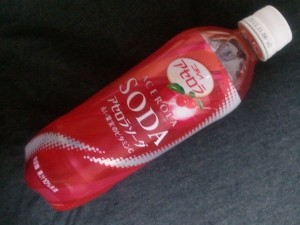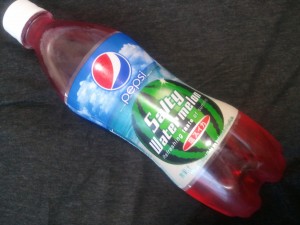 In your translator travails, you may come across the term 银联, particularly if you’re translating documents for stores, malls, and the like, and it may make you nearly tear your hair out in frustration trying to look up the kanji. That’s because 银联 is not kanji but in fact full-on Chinese. The funny-looking (for a person who studies Japanese) shape of the characters are a big tip off. 银联 is actually UnionPay, China’s home-grown bank card, which more and more Japanese retailers are beginning to accept. Now you should have no problem if they pop up.
In your translator travails, you may come across the term 银联, particularly if you’re translating documents for stores, malls, and the like, and it may make you nearly tear your hair out in frustration trying to look up the kanji. That’s because 银联 is not kanji but in fact full-on Chinese. The funny-looking (for a person who studies Japanese) shape of the characters are a big tip off. 银联 is actually UnionPay, China’s home-grown bank card, which more and more Japanese retailers are beginning to accept. Now you should have no problem if they pop up.
Monthly Archives: August 2012
Japanese soft drinks: Acerola Soda, Salty Watermelon, and Espressoda

Today I’ll give you a three-fer of Japanese soft drinks. The first is this Acerola Soda, of which I’m quite fond. Acerola is berry, similar to a cherry, which contains the highest amount of vitamin C of any fruit known. Vitamin C content is also a marketing point of this soda. The taste is somewhere in between cherry and watermelon.
 Next is the new Pepsi flavor for this summer, Salty Watermelon. Pepsi makes a new flavor every summer. In fact, by this point, Salty Watermelon is probably already gone. Japanese food makers love their limited time items, although it makes little sense to me – developing new products takes quite a bit of money, and with the vast majority of limited time items only being sold for a handful of months, often in limited territories, I wonder if they’re making back what they invested. But, anyway, Salty Watermelon soda. Actually, its a very appropriate flavor for a summer-themed drink in Japan. In Japan, its quite common to sprinkle a small amount of salt on watermelon, which contrary to expectations actually make it taste sweeter (this fact is now being picked up in some “life hack” articles). So although it sounds strange now, in a decade or so, it may seem perfectly normal. The taste wasn’t bad, which was surprising to me as I don’t like watermelon in the first place. It was basically as the name described – your standard artificial watermelon flavor with a hint of salt. Actually, it was a lot like a sports drink, which contain salt to help replenish sodium lost during exercise.
Next is the new Pepsi flavor for this summer, Salty Watermelon. Pepsi makes a new flavor every summer. In fact, by this point, Salty Watermelon is probably already gone. Japanese food makers love their limited time items, although it makes little sense to me – developing new products takes quite a bit of money, and with the vast majority of limited time items only being sold for a handful of months, often in limited territories, I wonder if they’re making back what they invested. But, anyway, Salty Watermelon soda. Actually, its a very appropriate flavor for a summer-themed drink in Japan. In Japan, its quite common to sprinkle a small amount of salt on watermelon, which contrary to expectations actually make it taste sweeter (this fact is now being picked up in some “life hack” articles). So although it sounds strange now, in a decade or so, it may seem perfectly normal. The taste wasn’t bad, which was surprising to me as I don’t like watermelon in the first place. It was basically as the name described – your standard artificial watermelon flavor with a hint of salt. Actually, it was a lot like a sports drink, which contain salt to help replenish sodium lost during exercise.
 Last up is Espressoda, an espresso-flavored soda which tasted absolutely awful to me – but then, I don’t like coffee. My girlfriend described it as tasting like a carbonated coffee candy drop. She felt it was far too sweet. Eventually, after sitting in the fridge for several days, she turned it into coffee-flavored jello which she liked much better.
Last up is Espressoda, an espresso-flavored soda which tasted absolutely awful to me – but then, I don’t like coffee. My girlfriend described it as tasting like a carbonated coffee candy drop. She felt it was far too sweet. Eventually, after sitting in the fridge for several days, she turned it into coffee-flavored jello which she liked much better.
Quick translation tip: Felix won’t register a translation
At some later date I’d like to go a bit more into Felix and why I think it’s a great CAT tool, but for now I’ll just share a little point about using Felix.
Are you using Felix with multiple documents and now suddenly Felix isn’t registering translations? Apparently, as I’ve just discovered, if you’re switching between different programs (say, Excel and PowerPoint) and you switch Felix into Review Mode while in one program and, without switching back to Translation Mode in that program, attempt to use Felix in Translation Mode in another program, Felix gets stuck in Review Mode (which can’t register translations – the root of your problem). To fix things, you have to go back to the program you switched Felix into Review Mode and, in that program, switch Felix back to Translation Mode, after which it should register translations in that other program just fine.
For example, I was working on an Excel document and a PowerPoint presentation at the same time with Felix open. While editing the Excel document, I switched Felix into review mode. Then I close the document (and Excel itself) and tried to register a new translation in the PowerPoint presentation (which was still on Translation Mode). However, none of my translations would register and when I tried to switch Felix from Translation Mode to Review Mode and then back again, all I got were error messages. By opening up Excel again and switching Felix back to Translation Mode in Excel, I was also once again able to register translations in PowerPoint (and switch between Review Mode and Translation Mode without getting error messages, after shutting all the programs down and reopening them again).
Quick translation tip: mysterious acronym
Got an acronym that you just can’t find no matter how much you Google it? If you’re working on a document for a company, take another look at who you’re working for – that acronym may just be the company’s name. I can’t tell you how many times I’ve had to re-learn this lesson (including just a few moments ago). In translation, sometimes the answer is right in front of your face.
